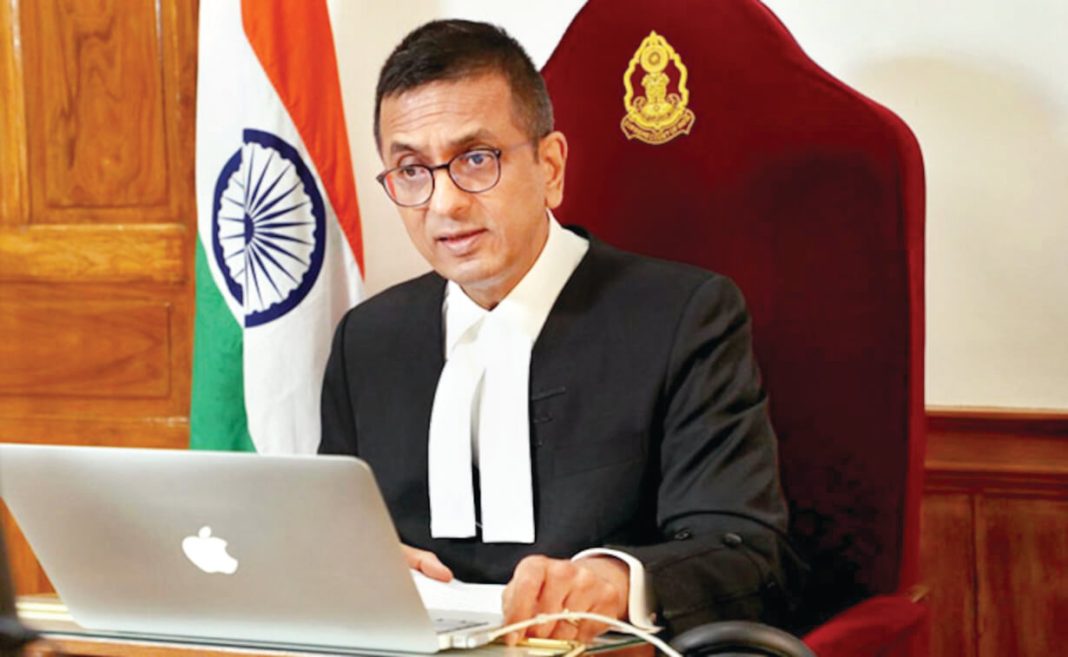By Dr Abhishek Atrey
During the Covid lockdown when most industries shifted to the work from home mode, many changes were brought about in the judiciary too to enable lawyers to work virtually. Even after the lifting of the lockdown, the importance of technological advancements was considered necessary by the Supreme Court.
Some of these are online filing of cases, mandatory filing of PDF files, petitions through email and WhatsApp, online appearance of lawyers, online issuance of entry passes for visitors, uploading cases in PDF on the website of the Supreme Court and giving access of this to advocates in that matter, online cause lists, intimation of dates of hearing to advocates through email and messages and so on.
And now Chief Justice DY Chandrachud has taken strong exception to several High Courts being “tech indifferent” and said that those aspiring to be judges “have to be tech friendly”.
Till sometime back, litigants who used to come to the Supreme Court to attend their cases had to come before 10 am in order to get their entry passes. This was after they had spent one or two hours standing in long queues. But with the introduction of the Suswagatam portal, the website of the Supreme Court, litigants can get entry passes online and come to the Court only when their case comes up.
With the online filing of cases in PDF form, be it special leave petitions, writ petitions, counter affidavits, applications, process fee, court fees, adjournment letters, etc., many working hours of advocates are saved. In addition, it helps save the environment by reducing use of paper.
Gone are the days when advocates would spend long hours researching in libraries, searching relevant cases from digests and books. Now, thanks to online portals such as SCC Online and Manupatra, research work has become smooth and at the convenience of lawyers.
A major factor leading to advocates getting tired was waiting for their turn in courts. Suppose an advocate had two matters in court and one was Item No 1 and the other Item No 50, he had to reach the court before 10 am and sit till 4 pm to attend both cases. No constructive work could be done and valuable time was spent idling either in the cafeteria, the library or gossiping. It was only after reaching his office around 5 pm or 6 pm that a lawyer starts reading files for the next day and drafting matters. Needless to say, after spending the whole day in court just waiting, it is impracticable for any human to concentrate in the evening on matters for the next day. Depleted of energy and enthusiasm, this gets worse if courts sit beyond 4 pm.
One practical benefit of going online is that arguments can be made through video conferencing. This allows lawyers to effectively work and manage time to prepare drafts. There are also less chances of matters clashing or tension building up if they are not able to reach different courts in time. Video conferencing helps lawyers from any court in India to appear and argue their matters in the Supreme Court. Similarly, lawyers from the Supreme Court can argue cases in different High Courts at the same time.
Another advantage of video conferencing for a lawyer is that his name will be displayed on the screen and judges can recognise them. Otherwise in every court, only a few lawyers are known to judges by names and they are the ones who appear regularly in that court.
The right to access the justice delivery system is part of fundamental rights and included under Article 21 of the Constitution. Certain writ petitions were also filed in the Supreme Court to declare the right to appear before courts through video conferencing as a fundamental right. However, no decision has been taken on them.
Chief Justice DY Chandrachud has time and again instructed judges to adopt a tech friendly view while dealing with matters. But several old fashioned judges who are not tech savvy discourage the practice of appearing online through video conferencing. Some judges in High Courts do not even give video conferencing links for their courts, and in some others, even video conferencing screens are removed.
Even in the Supreme Court, when books were removed from courtrooms and screens placed to display books or judgments at the time of arguments, several judges didn’t allow advocates to appear before them through video conferencing. Even when allowed, they are discouraged or orders passed in favour of their opposite counsels who are appearing in person.
The Supreme Court, therefore, took a strong view of this tech indifference. It said that those aspiring to be judges “have to be tech friendly” and also that “there is no choice now”. Issuing a series of directions to the High Courts to ensure that facilities for video conferencing and hybrid hearing are put in place in two weeks, Chief Justice Chandrachud said: “The question is not whether a particular judge is tech friendly or not. If you want to be a judge, you have to be tech friendly. There is no choice now.”
He added: “Just as you cannot as a judge say you don’t know what res judicata is or I do not know what interpretation of statutes is, if you want to be a judge in the country, you have to know how to use technology, just like if you have to drive a car on the road, you have to have a licence to drive the car.”
During Covid, all courts were running smoothly in the virtual mode. But some judges started compelling advocates and litigants to remain present in their courts physically. But with the world becoming a global village, it is the need of the hour that judges too become tech savvy and save time and effort.
—The writer is Advocate-On-Record, Supreme Court


